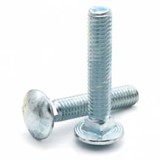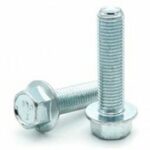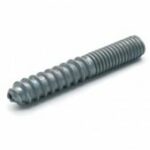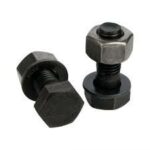Carriage bolts are a type of fastener designed with a smooth, rounded head and a square or hexagonal-shaped shank beneath the head. These bolts are often used in woodworking and metalworking applications where a visually appealing and secure connection is desired.
Key features of carriage bolts include:
- Head Design: Carriage bolts have a domed or rounded head, which is usually smooth and lacks any kind of drive for a wrench or screwdriver.
- Square or Hexagonal Shank: Below the head, carriage bolts have a square or hexagonal-shaped shank. This design prevents the bolt from turning once it is installed.
- Threaded Portion: The shank is followed by a threaded portion that allows the bolt to be securely fastened into a pre-drilled hole.
- Flat End: The end of the bolt opposite the head is typically flat. This flat end allows for the bolt to be tightened against a surface without causing damage.
- Common Materials: Carriage bolts are commonly made from steel, stainless steel, or other materials, depending on the application.
These bolts are often used in situations where the appearance of the fastener is important because the smooth, rounded head provides a neat and finished look. Common applications include attaching wood to wood, or wood to metal, where a flush and aesthetically pleasing connection is desired. Carriage bolts are also used in machinery and equipment assembly.
When installing a carriage bolt, a hole is typically drilled through the materials being joined, and the bolt is inserted from one side. The square or hexagonal shank prevents the bolt from rotating as the nut is tightened on the threaded end. This design provides a secure and stable connection.





